Alex. MacNab, 92 West Nile St., 1877 - 1909
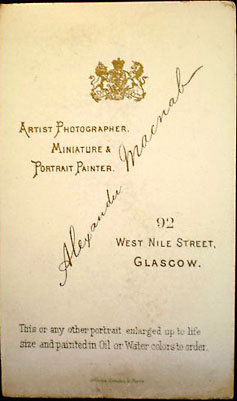

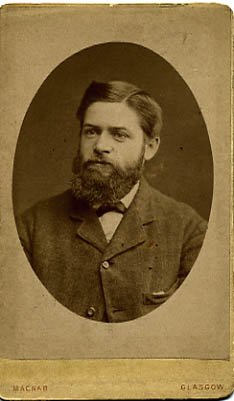
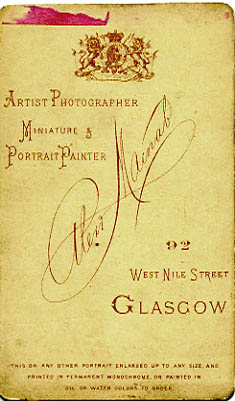




These first cdvs above probably come from 1877 or 1878, judging by the designs on the back which are similar to those used at the previous address.
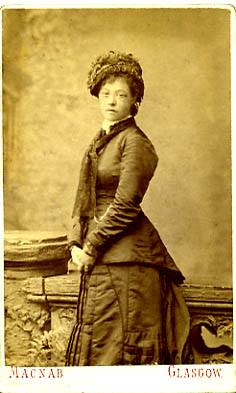
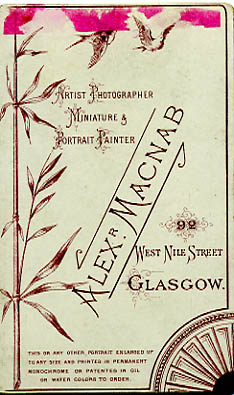
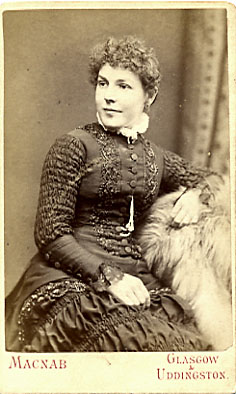
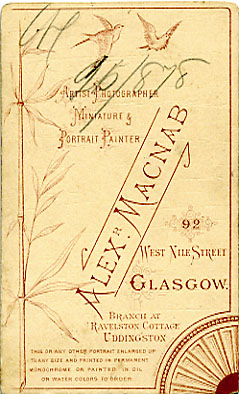
The two cdvs above, showing, a marked Far Eastern influence, which followed from the opening up of Japan to the West in the second half of the 19th century. The first probably comes from the early 1880s. The second card carries the additional Uddingston address, which was occupied by MacNab from 1886 - 1900 (Ref. 7). It also carries the card printer's name, George Mason, around the fan at the bottom right. The first two cards show the remnants of the same colour of protective tissue.
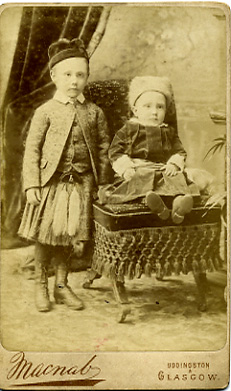

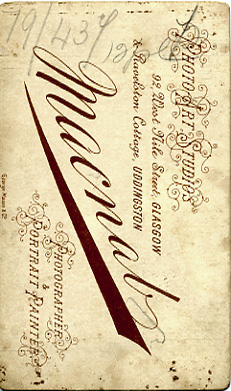
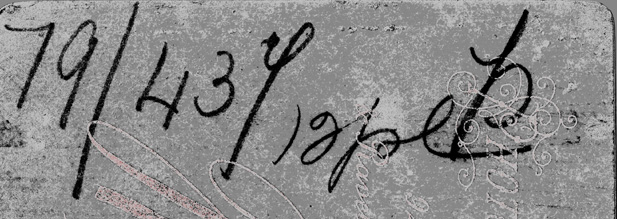
It is tempting to interpret the handwritten text on the back of the card above as the '437th exposure in 1879, and 12 copies are required', plus a signature scrawl. However, there are other similar scrawls on identical cards that do not lend themselves to such an interpretation, and carrying the Uddingston address it must be after 1886, but still probably in the 1880s.
The three cdvs below are all blank on the back, have had a tissue attached, and have gilt and chamfered edges. They are hoped to be in sequence, the first from around 1890. The second shows the beginning of the peaked shoulders and puffed sleeves which developed towards the mid years of the decade.
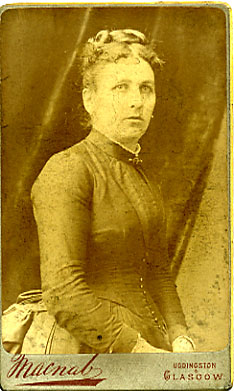
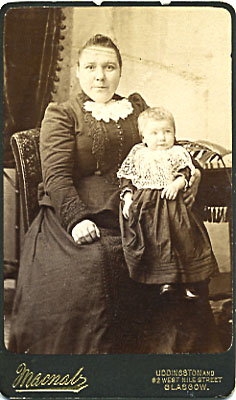
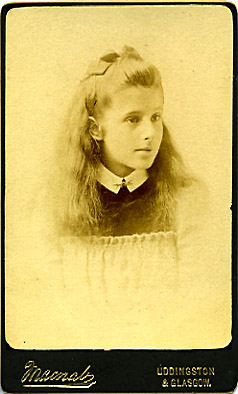
The accomplished gilt edged cabinet card below carries a high contrast print of a lady with the raised shoulders and puffed sleeves of the mid 1990s. The thick print is starting to separate from the backing card ( where the edge is lighter), a characteristic of the chromotype process used in photo finishing.
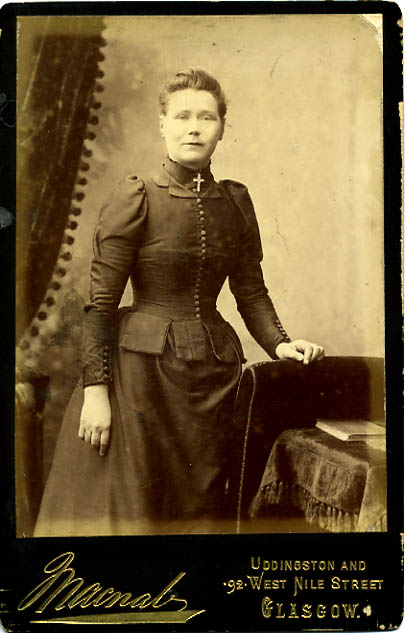
The miniature portrait below carries Uddingston and Bridgeton addresses, and is dated Feb. 1900 on the back. It has the same outer dimensions as the standard cdv.
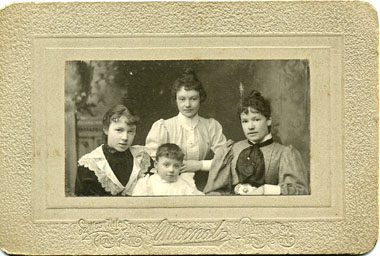
The first cabinet card below bears both the Bridgeton and Uddingston addresses so according to the dates we have should date from between 1896 and 1901. The second has the common Edwardian pattern of logo at bottom left, and text centre and right, and no other addresses, so may be a year or so after 1901. The similarity of the text designs suggest the first could be only a short period before this.